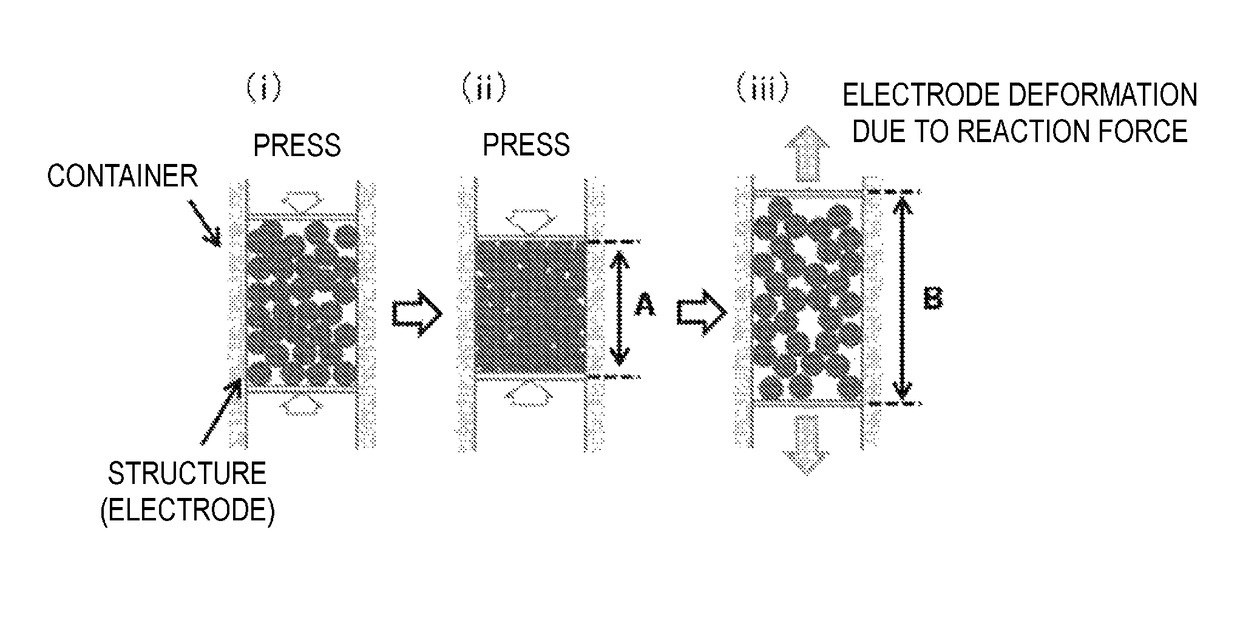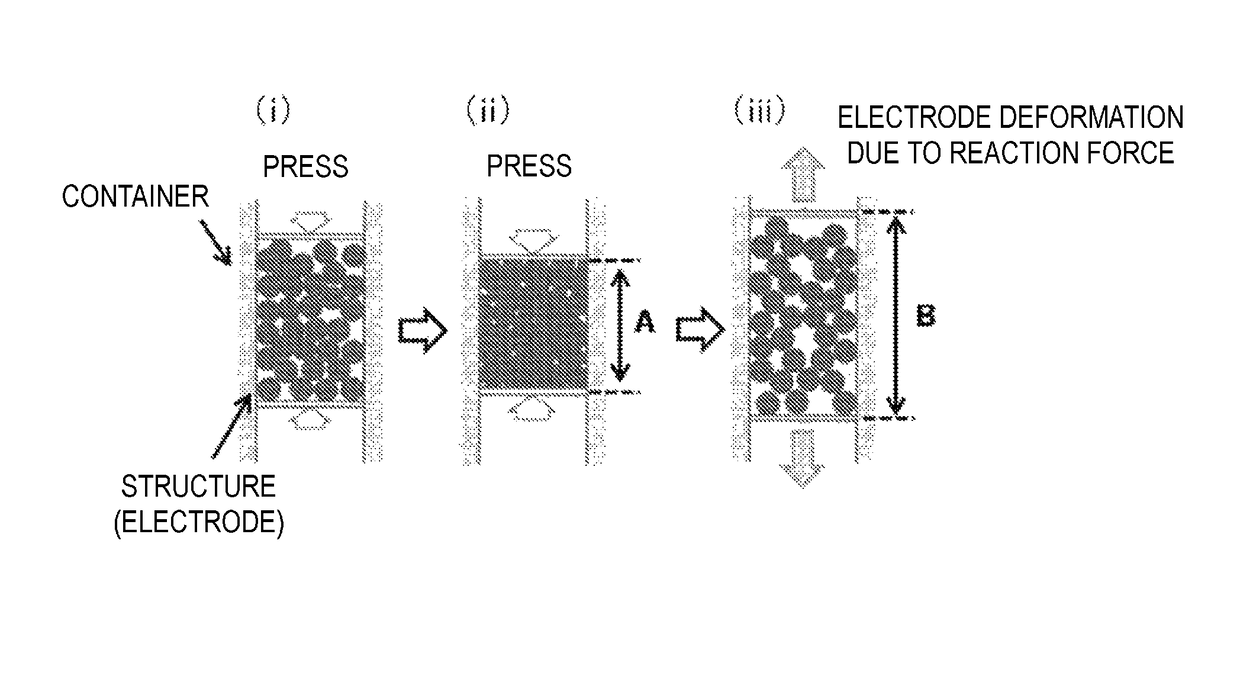Production method for negative electrode for all-solid-state battery, and negative electrode for all-solid-state battery
a production method and technology for all-solid-state batteries, applied in the direction of batteries, sustainable manufacturing/processing, cell components, etc., can solve the problems of reducing the charging and discharging repetition performance of lithium-ion secondary batteries for automobiles, difficult replacement of lithium-ion secondary batteries, and material not suitable for negative electrodes, etc., to reduce the input/output properties, reduce the deformation ratio of the negative electrode, and suppress the formation of gaps
- Summary
- Abstract
- Description
- Claims
- Application Information
AI Technical Summary
Benefits of technology
Problems solved by technology
Method used
Image
Examples
production example 1
[0082]First, 70 kg of a petroleum pitch with a softening point of 205° C., an H / C atomic ratio of 0.65, and a quinoline insoluble content of 0.4% and 30 kg of naphthalene were charged into a pressure-resistant container with an internal volume of 300 liters and having a stirring blade and an outlet nozzle, and the substances were melted and mixed for one to two hours while heating at 190° C. The heat-melted and mixed petroleum pitch was then cooled to approximately 100° C., and the inside of the pressure-resistant container was pressurized by nitrogen gas. The content was extruded from the outlet nozzle to obtain a string-shaped compact with a diameter of approximately 500 μm. Next, this string-shaped compact was pulverized so that the ratio (L / D) of the diameter (D) and the length (L) was approximately 1.5 to 2.0, and the resulting pulverized product was added to an aqueous solution in which 0.53 mass % of polyvinyl alcohol (degree of saponification: 88%) heated to 93° C. is dissol...
production example 2
(1) Phenol Resin Production
[0085]First, 32 g of paraformaldehyde, 242 g of ethylcellosolve, and 10 g of sulfuric acid were added to 108 g of o-cresol, and after the mixture was reacted for three hours at 115° C., the reaction solution was neutralized by adding 17 g of sodium hydrogen carbonate and 30 g of water. The obtained reaction solution was charged into 2 liters of water stirred at a high speed to obtain a novolac resin. Next, 17.3 g of the novolac resin and 2.0 g of hexamine were kneaded at 120° C. and heated for two hours at 250° C. in a nitrogen gas atmosphere to form a cured resin.
(2) Production of a Carbonaceous Material
[0086]After the obtained cured resin was roughly pulverized, the resin was subjected to pre-calcination for one hour at 600° C. in a nitrogen atmosphere (atmospheric pressure) and further heat-treated for one hour at 1,200° C. in an argon gas atmosphere (atmospheric pressure) to obtain a carbonaceous material. The obtained carbonaceous material was further...
production example 3
[0088]A carbonaceous material 3 was obtained by repeating the operations of Production Example 1 with the exception that in the oxidation of the porous spherical pitch, the temperature of the heating air was set to 165° C. and held for one hour.
[0089]The physical properties of the obtained carbonaceous material 3 included a specific surface area of 3.9 m2 / g, an average particle size of 19.5 μm, a d(002) of 0.357 nm, a Lc(002) of 1.8 nm, a ρBt of 1.97 g / cm3, an exothermic peak temperature T of 748° C., and a T−100×ρBt of 551.
PUM
 Login to View More
Login to View More Abstract
Description
Claims
Application Information
 Login to View More
Login to View More - R&D
- Intellectual Property
- Life Sciences
- Materials
- Tech Scout
- Unparalleled Data Quality
- Higher Quality Content
- 60% Fewer Hallucinations
Browse by: Latest US Patents, China's latest patents, Technical Efficacy Thesaurus, Application Domain, Technology Topic, Popular Technical Reports.
© 2025 PatSnap. All rights reserved.Legal|Privacy policy|Modern Slavery Act Transparency Statement|Sitemap|About US| Contact US: help@patsnap.com



